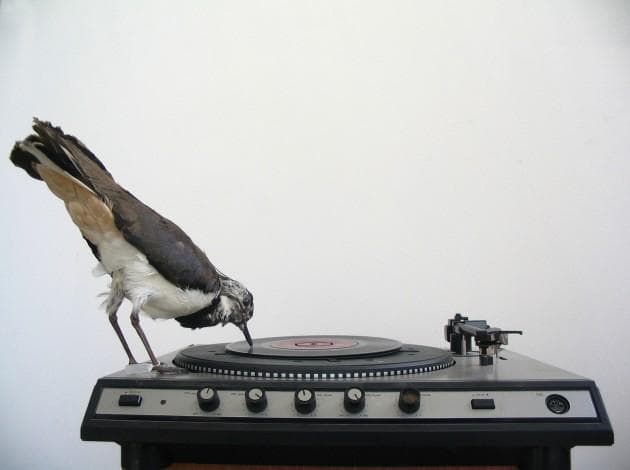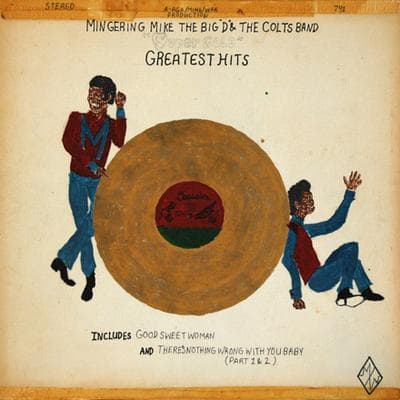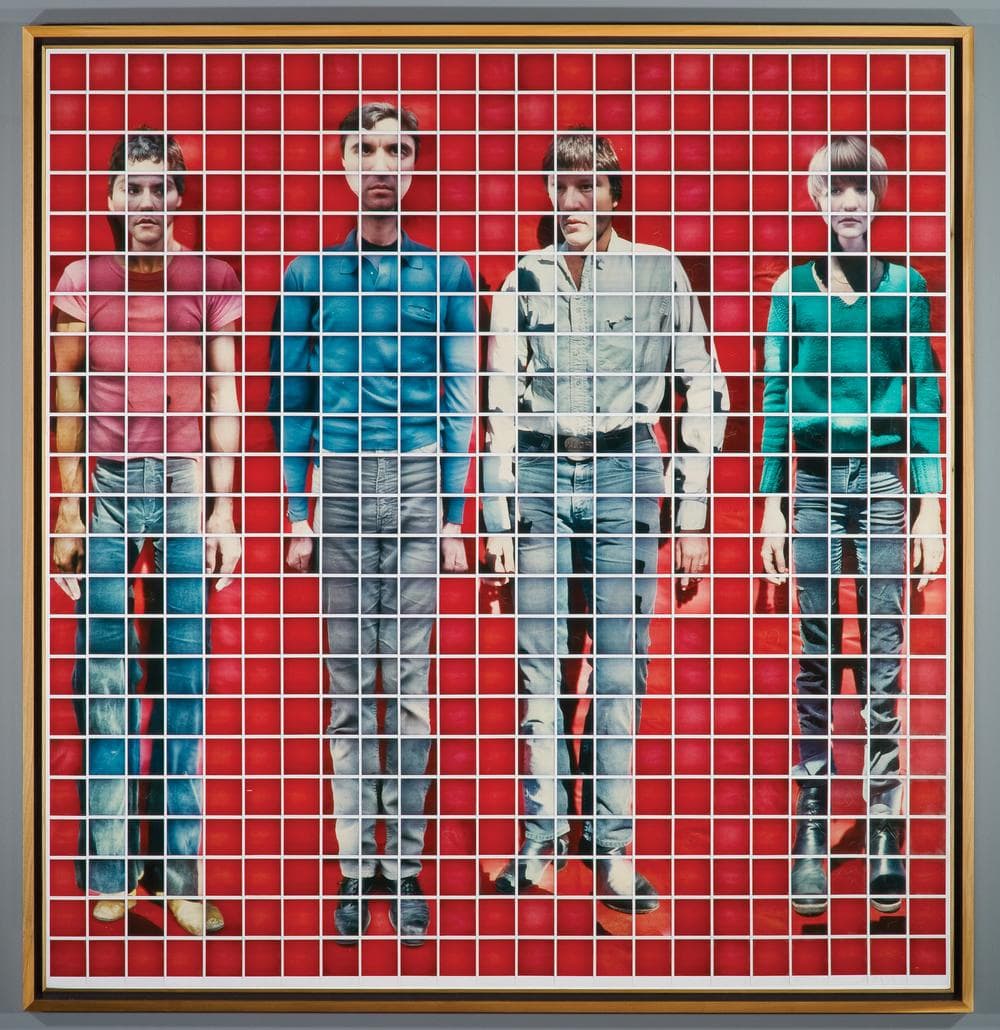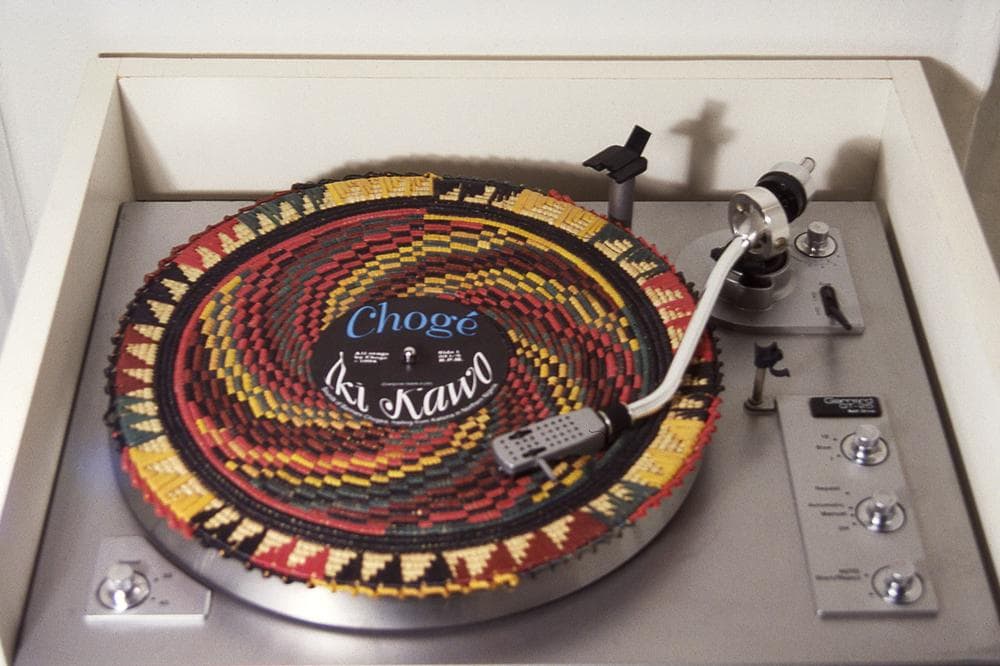Advertisement
A Surprising Harmony: Art Meets Vinyl At The ICA
Resume
It's no news that vinyl has made a comeback in recent years. The resurgence marks a reaction of sorts against the digital age — in an era of iPods and mp3s, vinyl is a return to the physical pleasures of taking a record out of its case, setting it on the turntable, gently placing the needle down and releasing the sounds stored across its surface.
And, of course, getting up 20 minutes later to turn it over.
That deeper relationship with vinyl is the inspiration behind "The Record," a touring exhibition that opens Friday at the Institute of Contemporary Art in Boston, and the first museum exhibition to explore the connections between vinyl and contemporary art.
If you're having a tough time imagining where the two intersect, think of your favorite album cover growing up. "The album cover as the 12-inch visual for many of us was our very first engagement with visual art," said exhibition curator Trevor Schoonmaker, when he took us on a tour of the show.
"Before looking in art books or before going to a museum, that 12-inch was as big as many television screens or bigger than many television screens, depending on how far back you go," he said.
After all, how many of us didn't try to trace or free draw that one special cover? And how long could you sit in one spot, staring at a cover while listening to the album and trying to make sense of the connection between what you were seeing and what you were hearing?
But the exhibition is about a lot more than just cover art. The 41 artists who appear in the show use the record as material and as metaphor, interpreted through sculpture and sound, painting and performance. Here are a few of the highlights:
1. Mingering Mike, various works, 1968-1977

By today's definition, Mingering Mike is an outsider artist. As a teenager in Washington, D.C., in the late '60s through mid '70s, the self-taught artist created an alternate universe for himself — as a soul superstar. "He produced all these fictional album covers," Schoonmaker said. "He even created fake cardboard records, the liner notes, the gatefold sleeve, sometimes the packaging complete with price tag and everything. So it's like he invented this universe where he was Mingering Mike the soul superstar. This was a way that he could be a superstar without having to actually achieve that in the physical realm."
In the liner notes of one album, Mingering Mike writes: "I say and sing only what I and I alone believe."
2. David Byrne, "More Songs About Buildings And Food," 1978

While most of us know Byrne as a founding member of the band Talking Heads, he is also an accomplished visual artist and has been for many years. Byrne combined his passions of art and music in 1978, when he designed the cover art for the band's album, "More Songs About Buildings And Food."
What became an album cover featuring Byrne and his bandmates started much larger in scale. "It's a collection of 529 Polaroid photographs that he had to shoot individually to produce this one giant mural," Schoonmaker said.
It's the full-size portrait that's on display at the ICA, and for a reason. "The art of creating album cover art is somewhat lost today," the curator said. "There's sort of a formulaic response to it now. But this is a beautiful artwork that just happened to be made for an album cover."
3. Fatimah Tuggar, Fai-Fain Gramophone, 2010

In northern Nigeria, where Tuggar grew up, vinyl records came into popularity at about the same time as another, somewhat similar looking object — "faifai," which were circular, woven mats made of raffia grass and used for various household purposes. And so records came to be known as "faifain gramophones."
The turntable in Tuggar's work toys with this idea, featuring a spinning faifai in place of a record. The faifai plays the rhythmic music of Barmani Choge, an all-female band from Tuggar's home country who sing about the important role of women in society. "They're not playing instruments; they're playing kitchen utensils, pots and pans," Schoonmaker explained. "It's a great evidence of the way in which artists have used the record as a means to talk about something far beyond the confines of music and vinyl."
Click "Listen Now" above to hear the full conversation with Trevor Schoonmaker. "The Record: Contemporary Art And Vinyl" runs through Sept. 5 at the Institute of Contemporary Art in Boston.
This program aired on April 15, 2011.